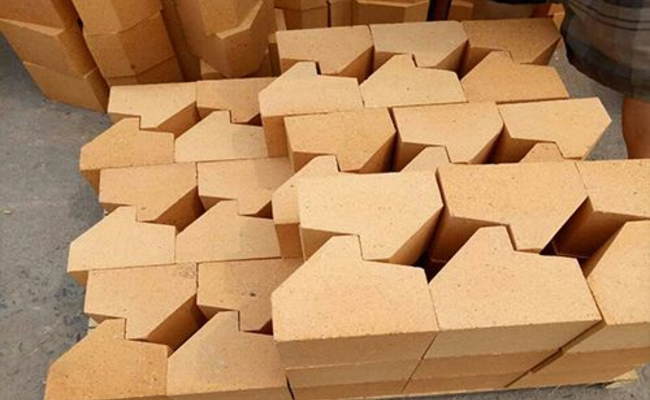
Seramik peletler, düşük erime noktası kilden yapılmış küresel gözenekli malzemelerdir, şeyl, uçucu külü, veya kalsinasyon yoluyla hammadde olarak kömür gangeri
Isı yalıtımından yapılmış refrakter malzemeleri yalıtımın temel amacı, yüksek sıcaklıktaki fırınlarda ısı dağılımını azaltmaktır., Fırın kendi ağırlığını azaltın, ve fırının dış sıcaklığını azaltın. Yalıtım refrakterleri, yüksek sıcaklıkta fırınların pozisyonunda çok önemlidir ve genellikle fırının hizmet ömrünü etkili bir şekilde iyileştiren çok katmanlı bir kompozit yapı oluşturmak için ağır refrakterlerle birlikte kullanılır., aynı zamanda enerji tasarrufu ve çevreyi korurken.
İçi boş küreler, alümina veya zirkonya gibi hammaddelerin sıvı formuna erimesi ve yüksek sıcaklıkta erimiş sıvıyı sıkıştırılmış hava ile küçük damlacıklara üfleyerek yapılır., Yüzey gerilimi ve santrifüj kuvvetin etkisi altında içi boş küreler oluşturmak. Yaygın malzemeler arasında alümina içi boş küreler bulunur, Zirkonya içi boş küreler, vesaire. Bu malzemeler refrakter malzemelerde yaygın olarak kullanılır ve üretmek için kullanılabilir İçi Boş Küre Tuğlaları ve yalıtım dökülebilir ürünleri. Yüksek saflık yüzünden, Düşük safsızlık içeriği, yüksek güç, ve bu malzeme içi boş topların düşük termal iletkenliği, Genellikle yüksek sıcaklık performansına ve yalıtım performansına sahip yüksek dereceli yalıtım malzemelerinin üretiminde kullanılırlar., ve ayrıca alevle doğrudan temas halinde olabilir.
Sürüklenen boncuklar, su yüzeyinde yüzebilen uçucu külün içi boş mikro boncuklarıdır., Yanan toz haline getirilmiş kömür fırınından boşaltılan kömür sinek külünden ayrılmış, çoğunlukla kirli beyaz. Sürüklenme boncuklarının kimyasal bileşimi büyük ölçüde dalgalanır, toz haline getirilmiş kömürün bileşimi ile yakından ilişkilidir. Parçacık boyutu genellikle 20 ~ 250μm arasındadır, Spesifik yüzey alanı 3000 ~ 3200cm2/g'dir, ve yığın yoğunluğu genellikle 250 ~ 400kg/m3'tür. Sürüklenen boncuklar genellikle yalıtım dökümlerinde kullanılır, ve bunları tanıtmanın amacı, daha büyük silindir basınç mukavemetleri ve daha düşük termal iletkenlik nedeniyle yalıtım dökülebilir beslenebilirlerin gücünü artırmak ve azaltmaktır..
Diyatomlu toprak, biyolojik kökenli bir tür silisli sedimanter kayadır. Diatom kabuğunun boyutu yaklaşık 5-400μm'dir, çok sayıda küçük gözenek içeren, Ve gözeneklilik şundan daha fazlasına ulaşıyor 80%, Yani mükemmel ısı yalıtım performansına sahip. Toplu yoğunluk, diyatomlu toprak kalitesini ölçmek için önemli bir kriterdir, yığın yoğunluğu ne kadar küçükse, Kalite ne kadar iyi. Diyatomlu toprak, diyatomlu toprak karolarının üretiminde yaygın olarak kullanılır, iyi termal yalıtım özelliklerine sahip, Ancak kullanım sıcaklığı 900'den yüksek olamaz ℃, aksi takdirde, Diyatomlu topraktaki silika, kare kuvareğe dönüştürülecek ve termal yalıtım özelliklerini kaybedecek. Ek olarak, Diatomit, düzensiz malzemelerde dolgu olarak da kullanılır.
Perlit volkanik patlamalardan asidik lav, 1.180-1350 ℃, Kapalı ve açık gözenekler açısından zengin genişletilmiş perlitin oluşturulması, genişleme katları ile 7-30 zamanlar veya daha fazla. Genişletilmiş perlit küçük, genel olarak, 40-200kg/m3 arasında, Termal iletkenlik çok düşük, Güvenli kullanım sıcaklığı aşağıda 800 ℃, ve belirli bir refrakter özelliklerine sahiptir. Öyleyse, Genişletilmiş perlitte kullanılır Çok sayıda yalıtım refrakter malzeme, yalıtım dökülebilir ürünlerdeki miktar çok büyük, esas olarak yalıtım malzemelerinin termal iletkenliğini azaltmak için, Blok genişletilmiş perlite belirli bir güç sağlayabilir, Petrokimya endüstrisi fırın ve boru yalıtımında yaygın olarak kullanılır. Ek olarak, Ayrıca bazı klişeleşmiş ürünler yapmak için genişletilmiş perlit kullanın.
Seramik peletler, düşük erime noktası kilden yapılmış küresel gözenekli malzemelerdir, şeyl, uçucu külü, veya kalsinasyon yoluyla hammadde olarak kömür gangeri. Pürüzsüz ve sert bir yüzeye sahiptir, İçinde petek şekli, düşük ısı iletkenliği, ve yüksek mukavemet, Yüksek kaliteli bir yapay hafif hammaddedir, esas olarak termal yalıtımda ve refrakter dökülebilir ürünlerde agrega olarak kullanılır.
Vermiculit, siyah mika'dan oluşan tipik bir katmanlı silikat mineralidir, Altın Mika, ve diğer mineraller, ve kimyasal bileşimi geniş bir şekilde dalgalanıyor, esas olarak mika bileşimine bağlı olarak. Vermiculit, ısıtma ve genişleme özelliğine sahiptir, refrakter malzemeler alanında kullanılmasını sağlar. Vermikülit, 200 ° C'ye ısıtıldığında hacim olarak genişlemeye başlar, ve hacim ağırlığı arasında düşer 600 Ve 900 KG/M3, ve hacim ağırlığı 100-130 Tam koterizasyondan sonra kg/m, Ve termal iletkenlik de çok küçük, İyi termal yalıtım özelliklerine sahip olmak. Vermikülit maksimum 1100 ° C sıcaklıkta kullanılabilir, böylece granül veya ince toz şeklinde sokulabilir ve biraz daha yüksek sıcaklıklara sahip parçalarda kullanılacak vermikülit tuğlalara veya termal yalıtım dökülebilir ürünlerine dönüştürülebilir..
Ekim ayından bu yana, alümina fiyatları artmaya devam etti, and China's largest bauxite importer - a…
Birinci, Yüksek Alümina Tuğla: The Leader In High Temperature Refractories As a leader in high-temperature…
The application of refractory bricks in the kiln immediately endangers the operation rate of the…
Analysis Of The Causes Of Common Quality Problems In Tunnel Kiln Construction And Measures To…
Corundum quality refractory castables are made from corundum to the new jade refractory insulation material…
Alüminyum-Silikon Refrakter Hammadde Analizi Prof.. Li Yong of the University of Science and…